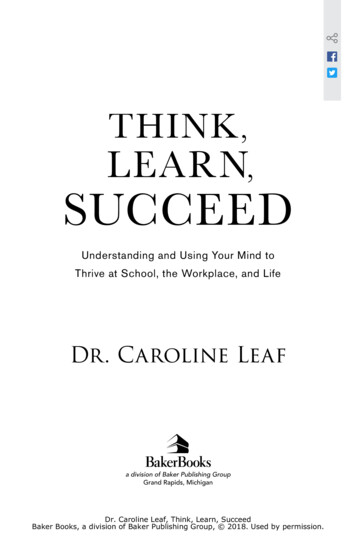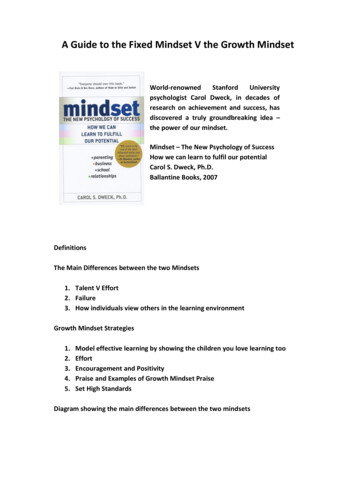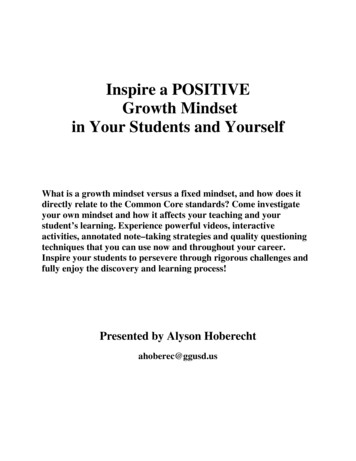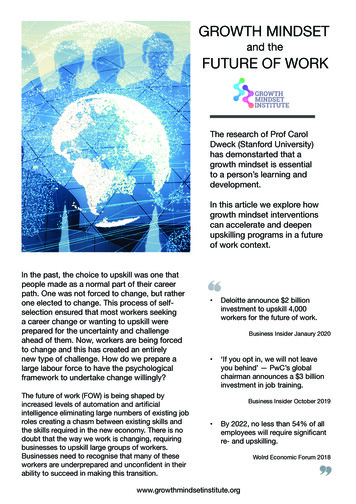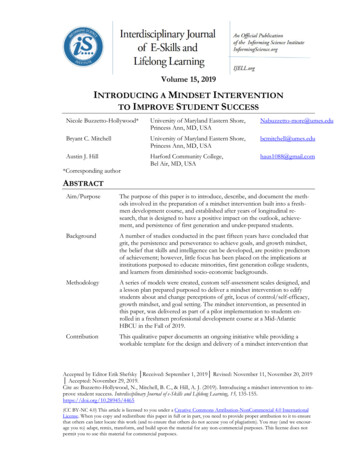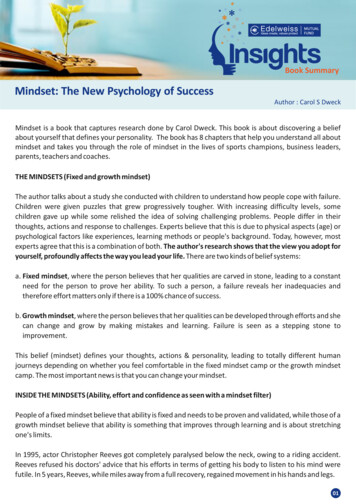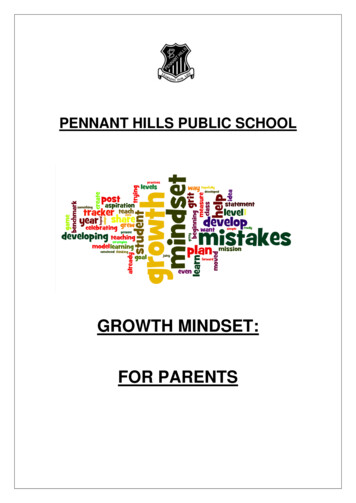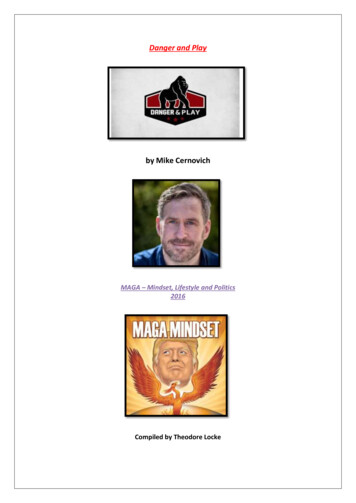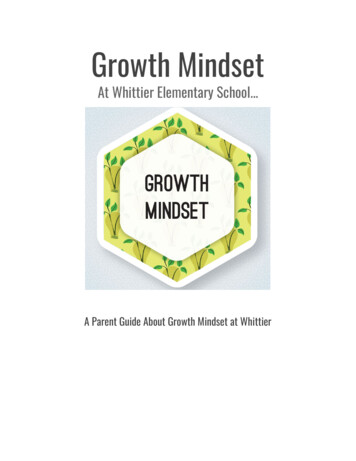
Transcription
Growth MindsetAt Whittier Elementary School.A Parent Guide About Growth Mindset at Whittier
2So.what is this mindset stuff my kids keep talking about?Simply put, there are two types of mindset, growth and fixed. A growthmindset is the belief that intelligence can be grown or developed withpersistence, effort, and a focus on learning. A fixed mindset is the beliefthat we are born with given intelligence, skills, or talents and those cannot be changed.“Mindset change is not about picking up a few pointers here and there. It’s about seeingthings in a new way. When people change to a growth mindset, they change from ajudge-and-be-judged framework to a learn-and-help-learn framework. Their commitment isto growth, and growth takes plenty of time, effort and mutual support.”-Carol S. DweckBrain-Based ResearchCurrent brain research indicates that the brain has the ability to change, adapt, and“rewire” itself. This is called neuroplasticity. Think of a person recovering from a stroke. Thebrain begins rewiring so that patients can speak and walk again, if they are willing to workhard and re-learn these skills. The brain creates new connections and eliminatesconnections that are not used.At Whittier, we believe in teaching our students about how the brain works so that they canhave a deeper understanding of growth mindset.
3Growth Mindset School CultureThere are four essential components that we integrate into our school culture- Equitable access to advanced learning opportunities - Differentiation- Deliberate Cultivation of SEL skills such as perseverance, resiliency and grit- Student understanding of neural networks in the brain- Growth mindset feedback and praiseThe SkillsEmbracing growth mindset is much more than just saying, “I have a growth mindset.”Students will experience and be taught social-emotional and growth mindset skillsthroughout their experience at Whittier. These skills below have been identified as essentialskills for life and career success.
4The Learning Targets
5Four Phase ApproachMonthly Grade Level Assemblies - Direct Teaching of SkillsClassroom Read Alouds with Reflective Questions - Engaging Read Alouds Correlated to Each SkillSchool-Wide Classroom Experiences - Engaging Experiences to Enforce Each SkillApplication of Skills in Problem-Based Learning Format - Authentic Application in Spring 2018Our School Improvement Team will continue to provide professional development for teachers. All teachershave received a copy of Mindsets in the Classroom: Building a Culture of Success and Student Achievementin Schools by Mary Cay Ricci. Last year we read and studied Mindset by Carol Dweck.How can I help my child at home?Mary Cay Ricci, author of Mindsets in the Classroom: Building a Culture of Success and Student Achievement inSchools , suggests that building resilience in our children is key. Here is what she suggests: Use growth mindset praise . Praise the willingness to try, effort, patience, and practice. Do not attributesuccess to “being smart” or “being the best.” Model flexibility. Kids aren’t born thinking flexibly. They need modeling to see adults handle challengingsituations without anger or frustration. Adopt a “glass half full” mentality at home. Setbacks help us grow. Model a positive attitude whenfaced with challenges. Help children find their own niche. Give kids the opportunity to try lots of things until they find an areathey thrive in. Resource: Mindset Kit for Parents : ��If parents want to give their children a gift, the best thing they can do is to teach theirchildren to love challenges, be intrigued by mistakes, enjoy effort, and keep on learning.That way, their children don’t have to be slaves of praise. They will have a lifelong way tobuild and repair their own confidence”-Carol S. Dweck
“Mindset change is not about picking up a few pointers here and there. It’s about seeing things in a new way. When people change to a growth mindset, they change from a judge-and-be-judged framework to a learn-and-help-learn framework. Their commitment is to growth, and growth takes plenty of time, effort and mutual su
